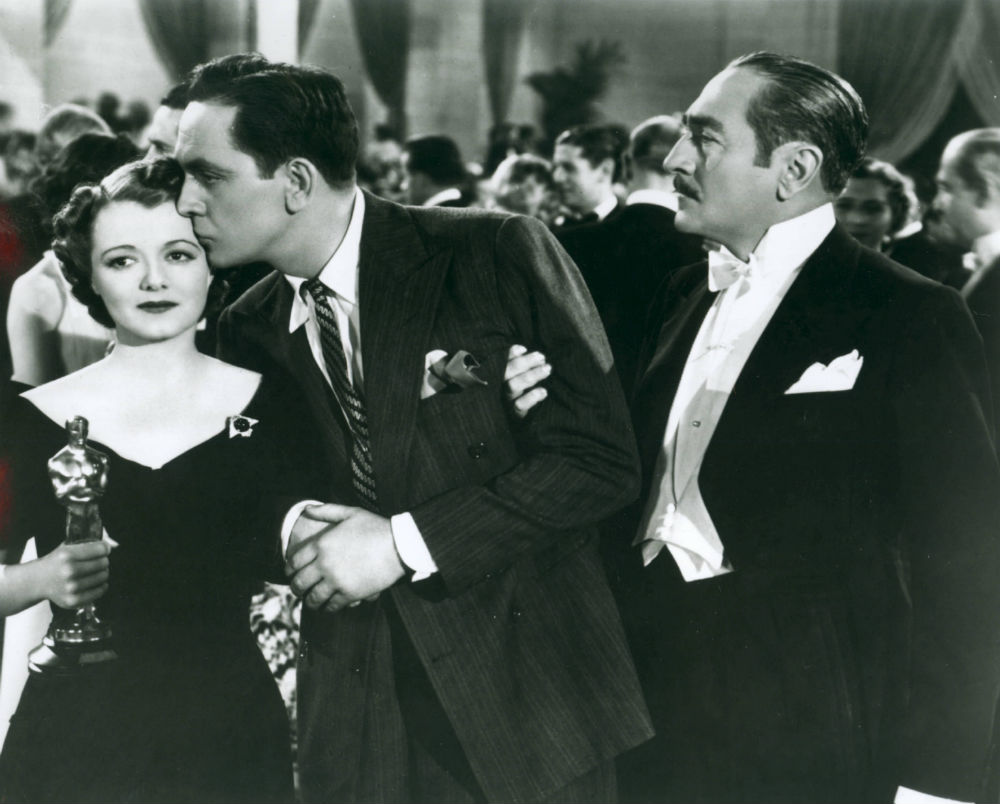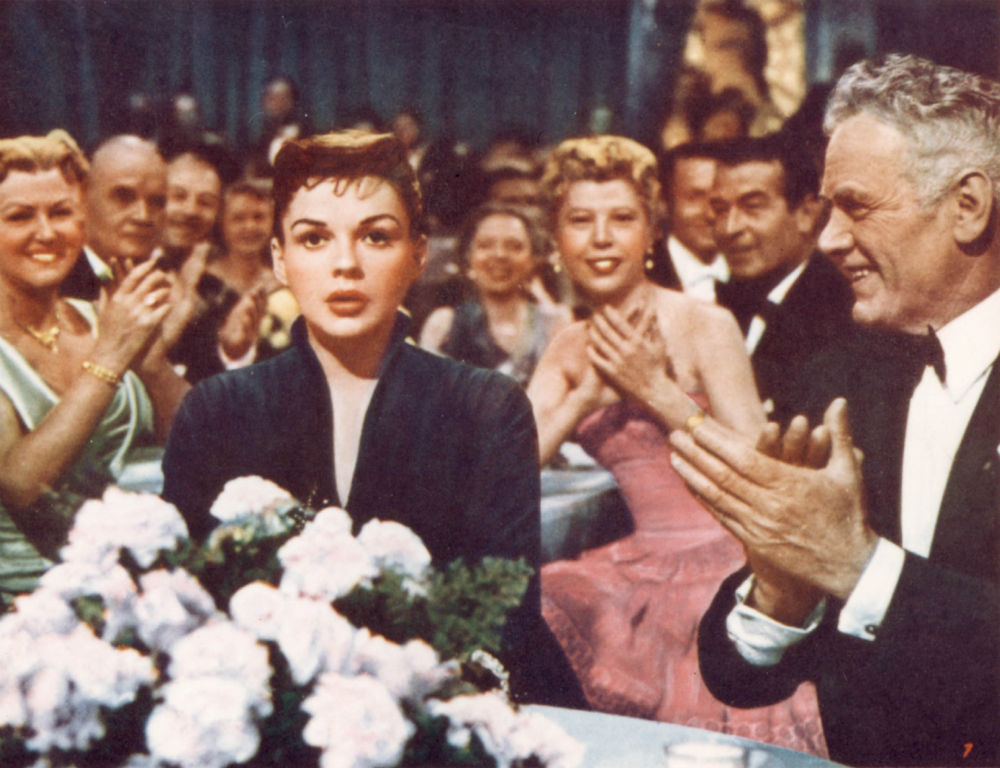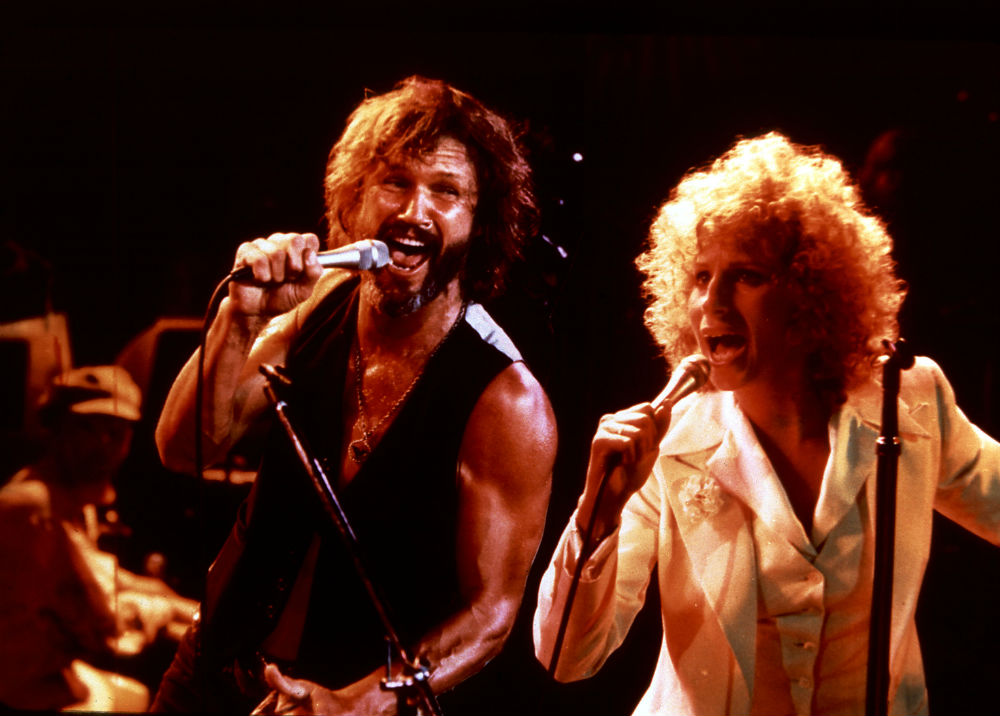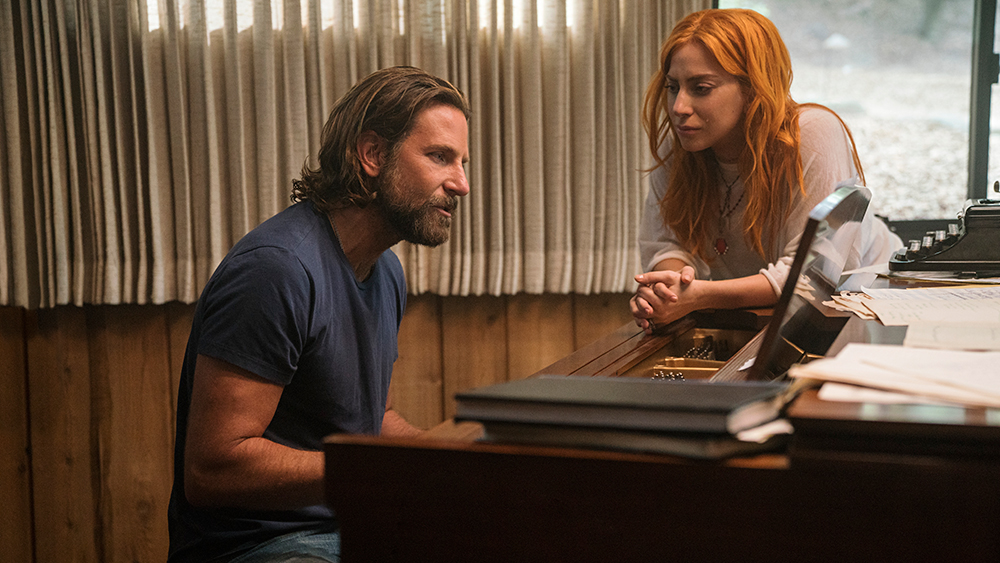‘A Star Is Born’: How Does the Music in the Previous Films Stack Up?
By Jon Burlingame
LOS ANGELES (Variety.com) – Hollywood’s allure, insatiable ambition, and the price of fame are at the center of one of the most oft-told stories in show-biz history: “A Star Is Born.” The latest edition, with Bradley Cooper and Lady Gaga, is the fourth to be made, and the third to be music-centric. Variety has already written many articles about that one, which is released today — read Owen Gleiberman’s review here — but how do the previous renditions stack up?
1937
Producer David O. Selznick’s original rendering won Oscars for its cinematography and its original story. While the story was written by director William A. Wellman and novelist Robert Carson, many of its sharpest and most cutting lines are believed to have been penned by famed writer Dorothy Parker and husband Alan Campbell (who were nominated in a separate Oscar category but didn’t win).
Janet Gaynor played Esther Blodgett-turned-Vicki Lester, a starry-eyed Midwesterner who falls in love with an alcoholic star named Norman Maine (Fredric March). He falls for her and helps her up the ladder as she witnesses his gradual downfall, which ends in a shocking suicide.
“The ’37 version paints a reasonably realistic picture of Hollywood,” says film historian Leonard Maltin. “It’s Hollywood’s version of Hollywood.”
But the story is still relevant, he adds. “People are hungrier for fame than ever before. Who couldn’t relate to the desire and the desperation, and at the same time the utter sadness of someone who has it all and is losing it?”
The musical component of the original “Star Is Born” is limited to Max Steiner’s dramatic score (penned two years before his magnum opus for Selznick’s “Gone With the Wind”). It’s traditionally orchestral, with an appropriately yearning love theme, and incorporates the song “California Here I Come” as a reminder of Esther’s journey from her humble beginnings to arrival in Tinseltown.
1954
The 1954 version is famous as Judy Garland’s return after being fired from MGM in 1950 — “washed up and thrown out,” in the words of author and Garland expert John Fricke. “But in ’51 and ’52 she played the London Palladium and the New York Palace and she was on top once more. The film would cap her comeback after four years away from the movies.”
This time Esther was a singer-turned-actress (again renamed Vicki Lester), although Norman Maine (James Mason) was still a fading movie star with a tendency to embarrass himself with incidents of public drunkenness. Playwright Moss Hart wrote the script and George Cukor – who had directed a similar story, “What Price Hollywood?” in 1932 – signed on to make his first movie musical (he would later win an Oscar for another musical, “My Fair Lady”).
Garland’s husband, producer Sid Luft, recruited composer Harold Arlen, who had written her most famous song, “Over the Rainbow,” as part of the ” Wizard of Oz” score in 1939. He then brought lyricist Ira Gershwin (brother and songwriting partner of George, the well-known composer who died in 1937) into the mix.
Seven of the 10 songs they wrote wound up in the three-hour roadshow version of the film, including “Gotta Have Me Go With You,” the lively big-band number that introduces Esther and a drunken Norman nearly ruins; “Here’s What I’m Here For,” as he proposes to her; “It’s a New World,” Esther’s first hit record, heard as they honeymoon; “Someone at Last” and “Lose That Long Face,” production numbers for the movies within the movie.
The masterpiece, however, was “The Man That Got Away,” one of the dozen or so greatest songs ever written for the screen. The opening lines – “The night is bitter, the stars have lost their glitter/ The winds grow colder, and suddenly you’re older” – are unforgettable, as Esther sings with her band in a deserted Hollywood nightspot.
The song had actually been written years earlier, with a Johnny Mercer lyric, Fricke reports. “Harold and Ira reconfigured it for ‘,’ for that spot in the script where Norman comes upon Vicki a second time and realizes that she has this something extra that makes her a great star. All of a sudden he’s not looking at her as a pickup, he’s looking at her as someone he wants to showcase.”
The song was Oscar-nominated (as was Warner Bros. music director Ray Heindorf, for his scoring) and became, next to “Over the Rainbow,” Garland’s favorite song, added to her stage act in 1955 and retained for the rest of her life. Arlen and Gershwin wrote three other songs that didn’t make it into the film, effectively replaced by the 15-minute “Born in a Trunk” medley (by Garland’s old MGM pal Roger Edens and his partner Leonard Gershe).
Garland was nominated for her powerful performance but lost to Grace Kelly, for “The Country Girl.” Many observers today believe Garland was robbed of the Academy Award.
1976
The 1976 remake has an especially colorful musical backstory. Writers John Gregory Dunne and Joan Didion toured with Led Zeppelin, Uriah Heep and Jethro Tull to research the rock-music touring “atmosphere,” which was at a new peak of decadence, according to writers at the time. Mark Rydell, briefly attached as director, offered the leads to Carly Simon and James Taylor, who turned it down as too close to their own lives and careers; next he tried Diana Ross and Alan Price, but Motown said no to the former and Warners no to the latter.
When the project landed in the laps of Barbra Streisand and then-boyfriend Jon Peters, they reportedly approached Elvis Presley about the male role; he turned it down and Kris Kristofferson agreed to play opposite Streisand. He would be the rechristened “John Norman Howard” to her “Esther Hoffman.”
Streisand called Paul Williams, seeking a song like his “You and Me Against the World,” which had been a 1974 hit for Helen Reddy. “But what I heard,” Williams tells Variety, “was ‘I want you to write the songs for “A Star Is Born.”‘ So I walked into a meeting with her and Jon and I had a script with notes on where all the songs were and what they’d be like, and what John Norman’s music would be like.”
Williams signed on and is credited as “musical supervisor,” although Streisand is also credited for “musical concepts.”
Ironically, Williams and songwriting partner Kenny Ascher had been working on a musical about Dorothy Parker and Alan Campbell, and screened the ’37 and ’54 versions. They always liked James Mason’s line to Garland – “I just want to take another look at you” – and turned it into their song “With One More Look at You,” which Streisand sings in the finale.
They wrote four more songs: “Watch Closely Now,” “Spanish Lies” and “Hellacious Acres” for Kristofferson, and “Woman in the Moon” for Streisand. Williams also finished a song begun by Rupert Holmes (“Everything”) and collaborated with Streisand herself on the love theme “Evergreen.”
She was just learning to play the guitar and, Williams recalls, performed a melody before asking, “I wonder if you could do anything with this?” “Evergreen” would be his last work on the film. He remembers calling Streisand just before getting on a plane to begin a tour with Olivia Newton-John and suggesting she switch the first two lines (“Love fresh as the morning air / love soft as an easy chair”) as the “easy chair” line might be easier to sing.
Other songs were written by Leon Russell (“Lost Inside of You” with Streisand), Kenny Loggins (“I Believe in You” with lyrics by Alan & Marilyn Bergman) and Donna Weiss (“Crippled Crow”).
The soundtrack album shot to no. 1 on the Billboard charts and stayed there for six weeks; the “Evergreen” single went to no. 1 for three weeks. “Evergreen” won the Best Song Oscar for Williams and Streisand, as well as Grammys for Song of the Year and Female Pop Vocal Performance.
Says Fricke of the enduring fascination with this story: “It is a great human love story, period. Two people who love each other so much that they sacrifice everything for each other. And it’s glamorized because it’s always been told against the background of the entertainment world.”




